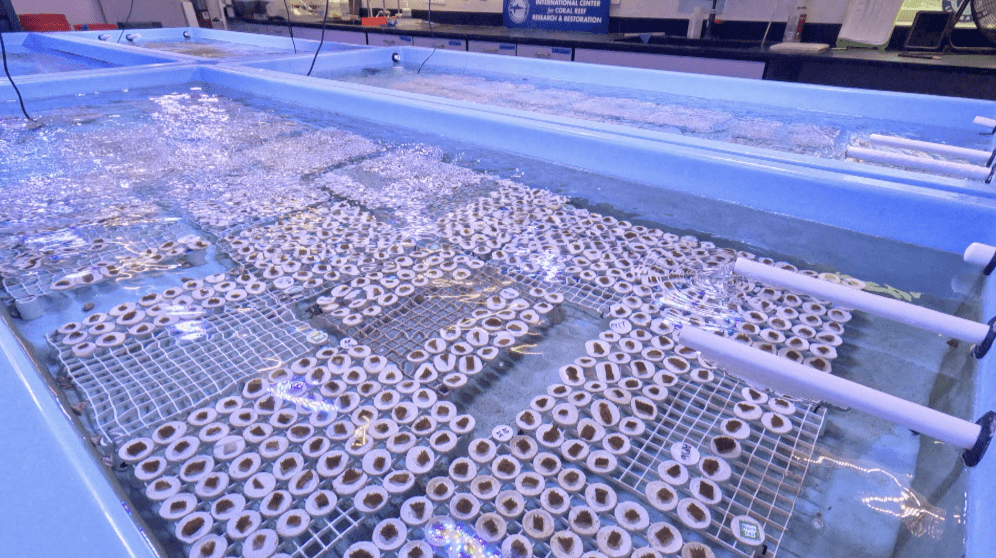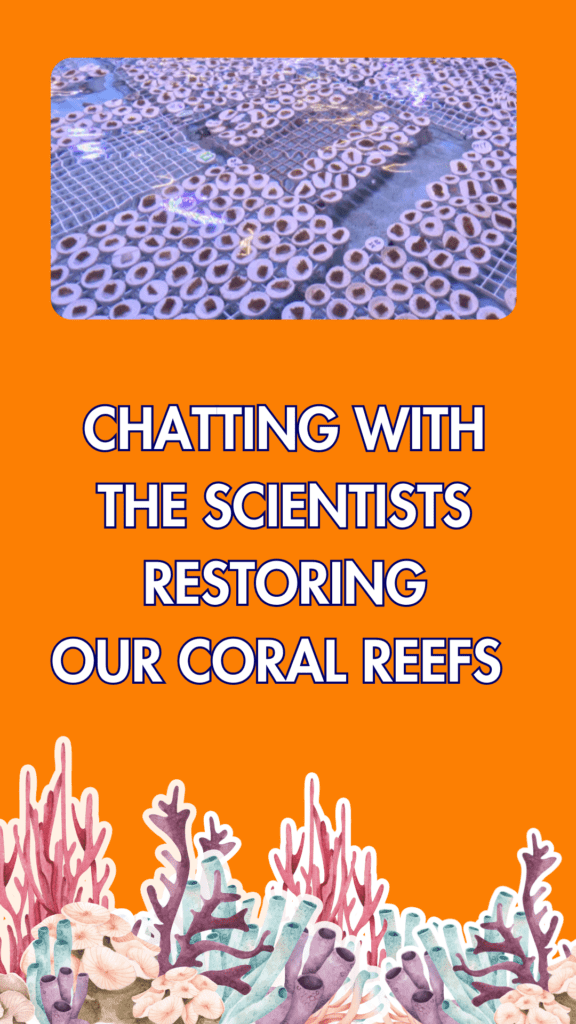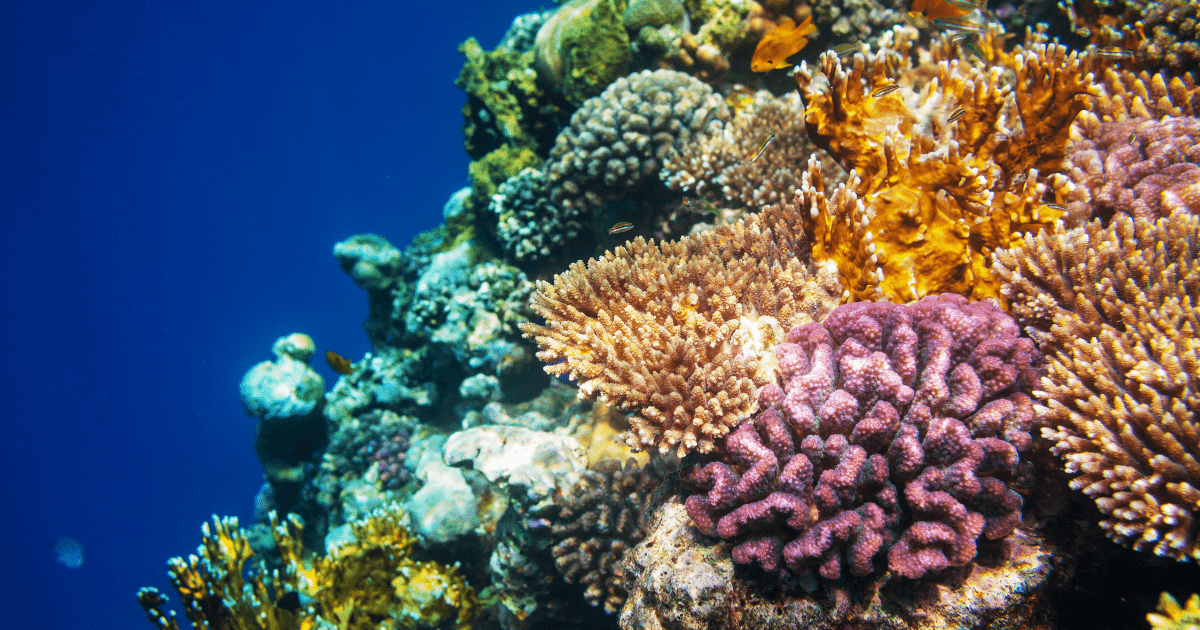As you journey along the picturesque Overseas Highway in the Florida Keys, your eyes will undoubtedly be drawn to a distinctive building nestled in the Lower Keys. Is it a fortress? A sanctuary, perhaps? Well, it may look like both, but it’s actually an unassuming laboratory with a remarkable purpose. Brace yourself for the superhero of scientific havens, where dedicated scientists are wielding their powers to rescue our precious coral reefs. Within its Category 5 Hurricane proof walls, they tackle the pressing challenges of coral reef restoration, unravel the mysteries of ocean acidity, and even harness coral reproduction. Get ready to embark on an awe-inspiring journey into the world of Mote Marine Laboratory, where science meets superhero-level conservation!
Disclosure: Some links on our site are affiliate links. If you purchase a linked item, we will make a commission, at no extra charge to you.
The History of MOTE Marine Laboratory
Formerly under other names, the lab was founded back in 1955 by Dr. Eugenie Clark, a true pioneer in the world of shark research. She was passionate about marine life and wanted to create a special place to study and protect our precious oceans. The first version of the lab in Placida, Florida was called the “Cape Haze Marine Laboratory.”
Fast forward to 1960, and the lab moved to its current headquarters in Sarasota, Florida. Dr. Clark renamed it the “Marine Laboratory of the Caribbean Foundation,” to reflect its broader mission of studying not only the Caribbean but also a whole range of marine species like sharks, dolphins, manatees, and of course, coral reefs.
In 1967 the lab underwent its last name change to Mote Marine Laboratory. The name “Mote” was chosen to honor William R. Mote, a benefactor who generously supported the organization’s mission and research endeavors. Since then, Mote Marine Laboratory has continued to build upon its legacy and is now the pinnacle for coral reef restoration research.

Coral Reef Facts
- Coral Reefs are Biodiversity Hotspots. Reefs are often referred to as the “rainforests of the sea” due to their incredible biodiversity. Despite covering less than 1% of the ocean’s surface, they are home to approximately 25% of all marine species.
- Coral reefs provide essential habitats and shelter for numerous marine organisms, including fish, crustaceans, mollusks, and sea turtles. They offer feeding grounds, breeding sites, and nurseries for a wide variety of marine life.
- Coral reefs exhibit complex social structures and communities. Different species of coral polyps cooperate, compete, and form intricate relationships with other organisms, creating a dynamic and interconnected ecosystem.
- Coral reefs are renowned for their vibrant and striking colors. These hues result from the symbiotic relationship between corals and microscopic algae called zooxanthellae, which provide corals with energy through photosynthesis.
- Climate change poses a significant threat to coral reefs. Rising sea temperatures lead to coral bleaching, a phenomenon where stressed corals expel their zooxanthellae, resulting in the loss of color and ultimately leading to coral death if prolonged.
- Coral reefs are invaluable sources of potential medical treatments. Many organisms found in coral reef ecosystems contain compounds with antibiotic, anti-inflammatory, and anti-cancer properties, which could lead to the development of new drugs and treatments.
- Physical Barrier Protection: Coral reefs act as natural barriers, protecting coastlines from erosion and reducing the impact of storm surges and waves. They help buffer shorelines against the destructive forces of hurricanes and tsunamis.
- Ancient and Slow-Growing Structures: Coral reefs are incredibly ancient, with some reefs estimated to be over 10,000 years old. However, their growth is incredibly slow, often at a rate of just a few centimeters per year. This makes their preservation and conservation all the more critical.
WATCH OUR TOUR ON YOUTUBE. DON’T FORGET TO SUBSCRIBE!
What is Ocean Acidity?
Ocean acidity refers to the ongoing decrease in the pH levels of Earth’s oceans. It is primarily caused by the absorption of carbon dioxide (CO2) from the atmosphere into seawater. When carbon dioxide dissolves in water, it forms carbonic acid, leading to an increase in hydrogen ions and a decrease in pH, making the water more acidic.
Where does Ocean Acidity Come From?
The process of ocean acidification has been accelerated by human activities, particularly the burning of fossil fuels and deforestation. These activities release large amounts of carbon dioxide into the atmosphere, which is subsequently absorbed by the oceans.
The impacts of ocean acidity are far-reaching. Posing a significant threat to marine life, particularly organisms with calcium carbonate shells or structures, such as coral reefs, shellfish, and plankton. The increased acidity hinders the ability of these organisms to build and maintain their shells or skeletons, making them more vulnerable to dissolution and growth inhibition.
MOTE Marine Labs Ocean Acidity Division
With its state-of-the-art facilities, Mote Marine Laboratory is at the forefront of studying ocean acidity and its consequences for these delicate ecosystems. Through experiments and field observations, the staff and visiting scientists at Mote Marine Laboratory are deciphering the mechanisms behind ocean acidification. They investigate how increasing levels of carbon dioxide in the atmosphere are absorbed by the oceans, leading to chemical changes that disrupt the delicate balance of marine life. This research helps shed light on the specific ways in which coral reefs, often referred to as the rainforests of the sea, are affected by the changing chemistry of their environment.
During your own Mote Marine Laboratory tour, you will speak to chemists who explain the impacts of ocean acidity on coral reefs. Their findings contribute to global efforts aimed at preserving the health and resilience of these invaluable ecosystems.
Coral Reef Restoration
Mote Marine Laboratory is spearheading a remarkable coral restoration initiative from their Florida Keys locations. Using a combination of traditional and innovative methods, the scientists at Mote Marine Laboratory are working tirelessly to restore and rehabilitate damaged or degraded coral reefs. You will be walked through all of these methods during your lab tour. Including coral propagation, coral nurseries, and out-planting, where healthy coral fragments are cultivated and then strategically transplanted onto degraded reef areas. Through meticulous monitoring and evaluation, scientists assess the success of these restoration efforts and make necessary adjustments to optimize the survival and growth of the transplanted corals.
One of the key strengths of Mote Marine Laboratory’s coral restoration program lies in its collaborative partnerships with local communities, conservation organizations, and government agencies. By engaging stakeholders and raising awareness about the importance of coral reefs, Mote Marine Laboratory fosters a sense of stewardship and collective responsibility for these invaluable ecosystems. Through their relentless dedication to coral restoration, Mote Marine Laboratory is not only bringing damaged reefs back to life but also inspiring others to take action and become guardians of our ocean’s treasures.
Visiting Mote Marine Laboratory at Sugarloaf Key
Sugarloaf Key, Mote Marine Laboratory welcomes visitors for a behind-the-scenes experience through guided tours by appointment only. You will find yourself immersed in the scientific world of coral restoration as a knowledgeable staff scientist takes you on a journey through the various departments involved in the restorative process.
While the tour itself is free, Mote Marine Laboratory gratefully accepts donations to support its ongoing conservation efforts. These contributions help fund vital research, the development of sustainable restoration techniques, and educational programs that raise awareness about the importance of coral reef preservation.
Tips for Doing Your Part in Saving the Coral Reefs
- Practice Responsible Diving and Snorkeling: When exploring coral reefs, ensure you have proper buoyancy control to avoid touching or damaging the fragile corals. Avoid standing or resting on coral formations, as they are living organisms. Use reef-safe sunscreen to prevent harmful chemicals from entering the water and damaging coral reefs.
- Reduce Carbon Footprint: Take steps to minimize your carbon footprint. Reduce energy consumption by using energy-efficient appliances, opting for renewable energy sources, and conserving electricity. Choose eco-friendly transportation options, such as biking or using public transport, and reduce air travel when possible.
- Conserve Water: Conserving water helps reduce wastewater runoff that can carry pollutants into the oceans. Simple practices like fixing leaks, taking shorter showers, and using water-saving fixtures can make a significant difference.
- Minimize Chemical Usage: Use environmentally friendly cleaning products, fertilizers, and pesticides. Chemicals from these products can find their way into water systems and harm coral reefs. Opt for natural alternatives or those labeled as reef-safe.
- Support Sustainable Seafood: Choose sustainably sourced seafood to reduce overfishing and destructive fishing practices. Unsustainable fishing practices can damage coral reefs and disrupt the balance of marine ecosystems.
- Reduce Plastic Waste: Plastic pollution poses a severe threat to coral reefs. Minimize single-use plastic items and opt for reusable alternatives. Properly dispose of plastic waste and participate in beach cleanups to prevent plastic from entering the oceans.
- Support Organizations and Research: Donate to reputable organizations like MOTE Marine Laboratory working towards coral reef conservation and research. These organizations play a crucial role in raising awareness, conducting scientific studies, and implementing conservation projects.
- Educate Others: Spread awareness about the importance of coral reefs and the threats they face. Educate friends, family, and communities about sustainable practices and the need for coral reef conservation. Encourage others to make informed choices that benefit the environment.
- Engage in Responsible Tourism: Choose tour operators and accommodations that prioritize sustainable practices and have minimal impact on coral reef ecosystems. Respect marine life, follow designated paths while snorkeling or diving, and avoid souvenir purchases made from coral or other endangered marine species.
Ready for More?
Just can’t get enough? You can tour many of the MOTE Labs. Find tour and location information here.


